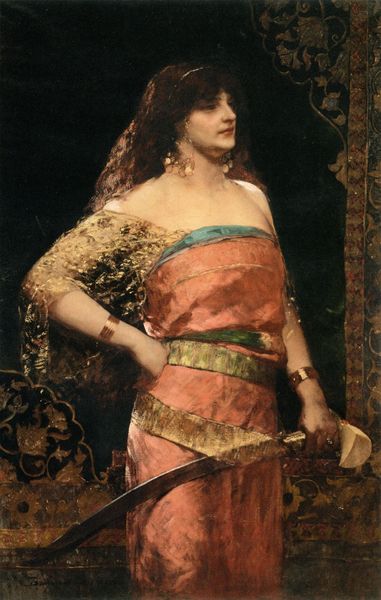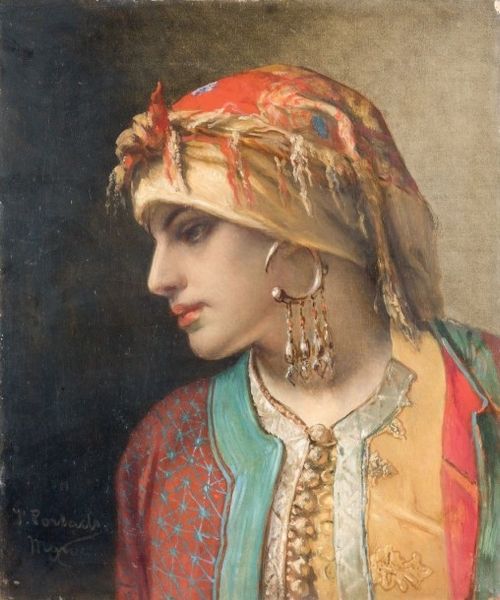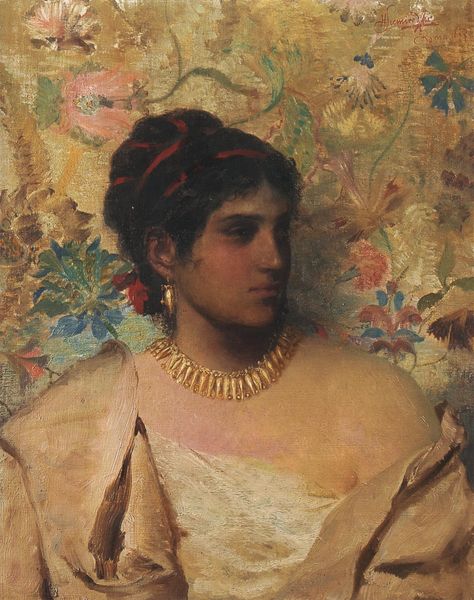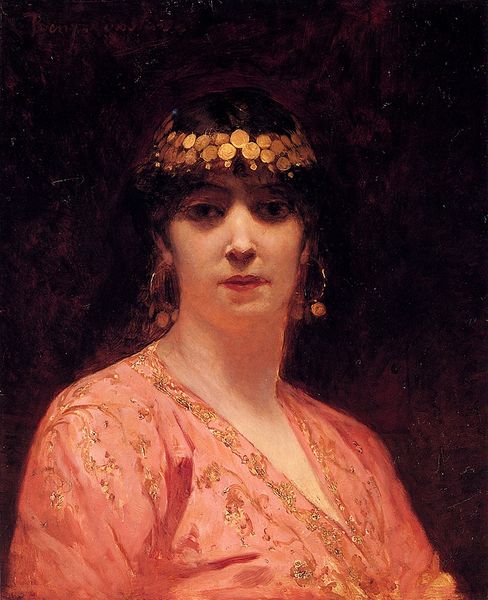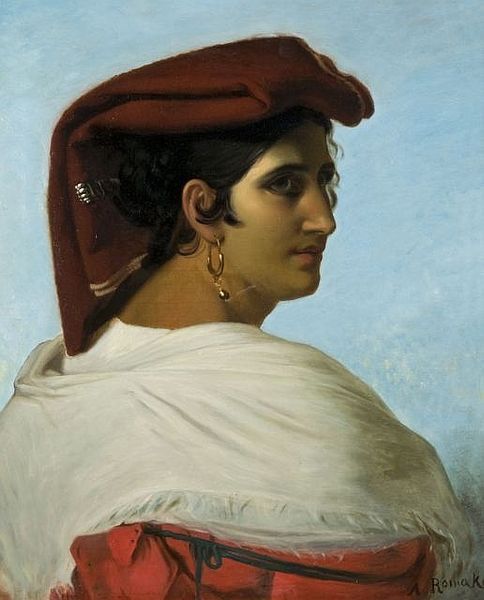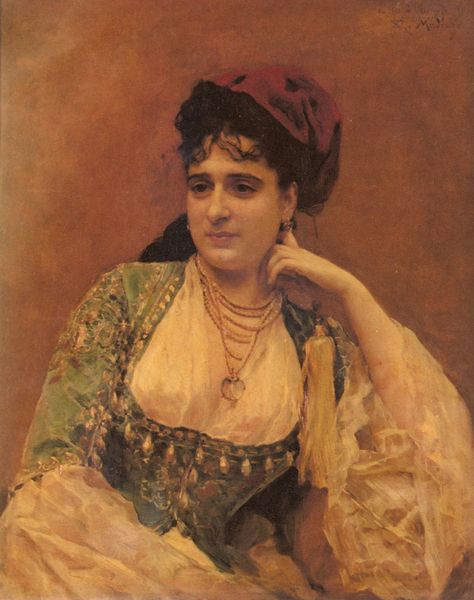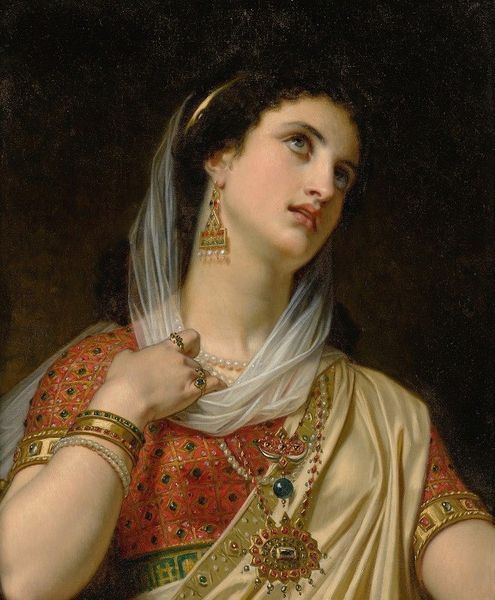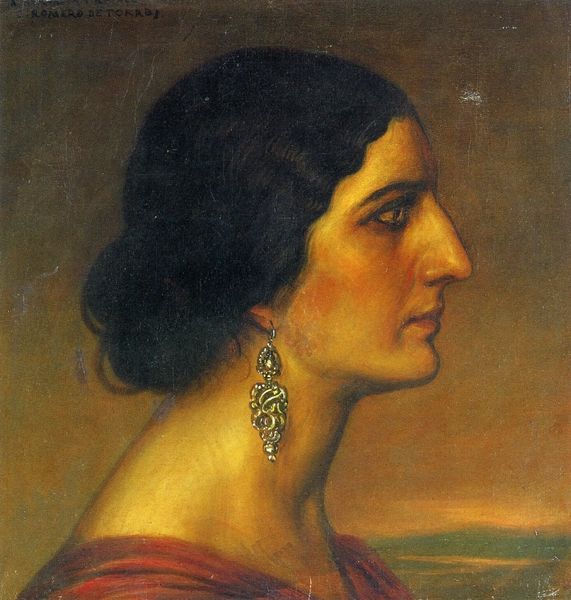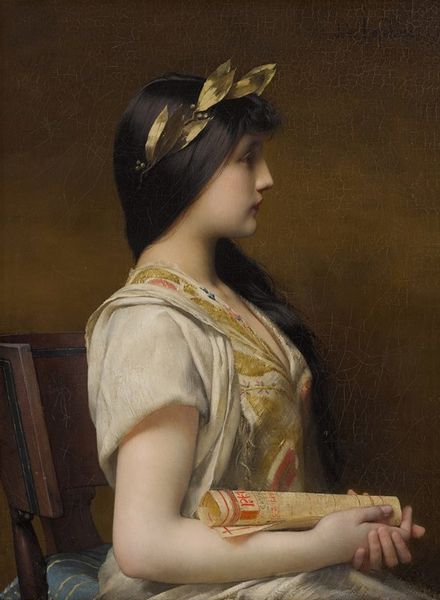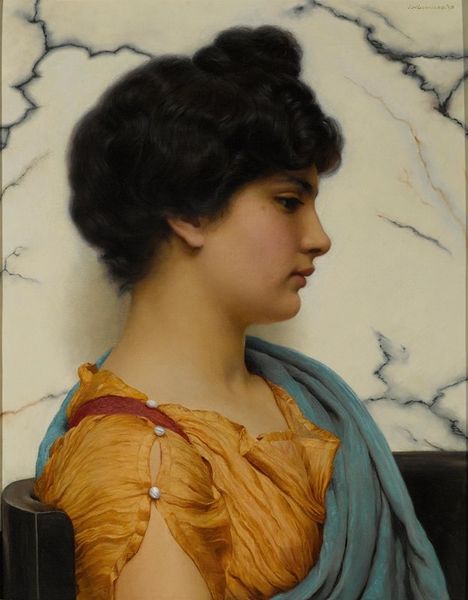
painting, oil-paint
#
figurative
#
painting
#
oil-paint
#
romanticism
#
orientalism
Copyright: Public Domain: Artvee
Editor: This is "Portrait Of A Woman" by Frederick Arthur Bridgman, an oil painting. I'm really drawn to the texture of the scarf. It looks almost tangible, like I could reach out and feel the delicate fabric. How would you interpret this piece? Curator: Well, focusing on the materiality, consider the context of Orientalism, prevalent at the time. Bridgman was interested in North Africa and the Middle East, but viewed from a Western perspective. So how does Bridgman's rendering of the materials in this painting engage with contemporary modes of industrialisation and empire? Is it an attempt to recapture craft in the face of mechanisation, to imagine modes of luxury not possible in rapidly urbanising European societies? Editor: That's a really interesting way to look at it! I hadn't thought about how the details like the embroidery or the elaborate headdress would speak to a larger conversation about industry and Western perspectives. Are you saying Bridgman’s interest might have less to do with genuinely depicting North African and Middle Eastern society, and more to do with how the materials signal value or status within a consumerist system? Curator: Precisely. Think about where these materials likely originated – who produced them? How did they become commodities for a Western market and artistic consumption? Consider also the role of the art market in validating or invalidating such productions. Where and how was it shown and circulated, and for whose consumption? Editor: So, rather than just appreciating the aesthetic beauty, you're encouraging me to question the journey of those materials. It's less about the individual and more about production of the work, labor, consumption, and the historical context within the art market. Curator: Exactly. By interrogating the materials and the means of their representation, we can expose complex social and economic relationships. It invites scrutiny of Western views of foreign lands as sources of inexpensive labor and materials, and questions what aesthetics communicate about that world. Editor: Wow, I'm starting to look at everything from such a different perspective. I didn’t realise how much the materials could tell us! Curator: Art history often overlooks the vital relationship between materiality and culture. You've started to unlock these relationships.
Comments
No comments
Be the first to comment and join the conversation on the ultimate creative platform.

